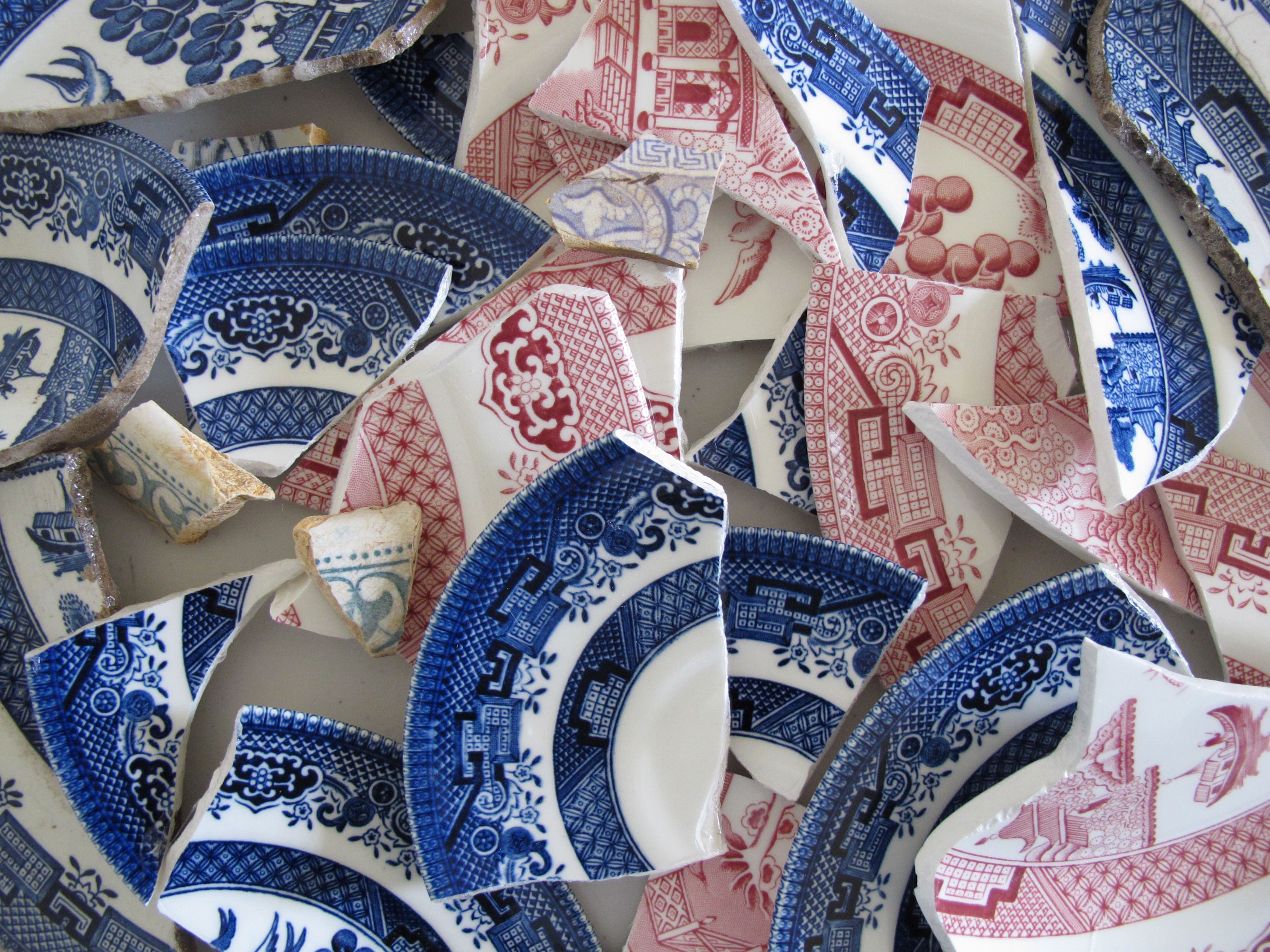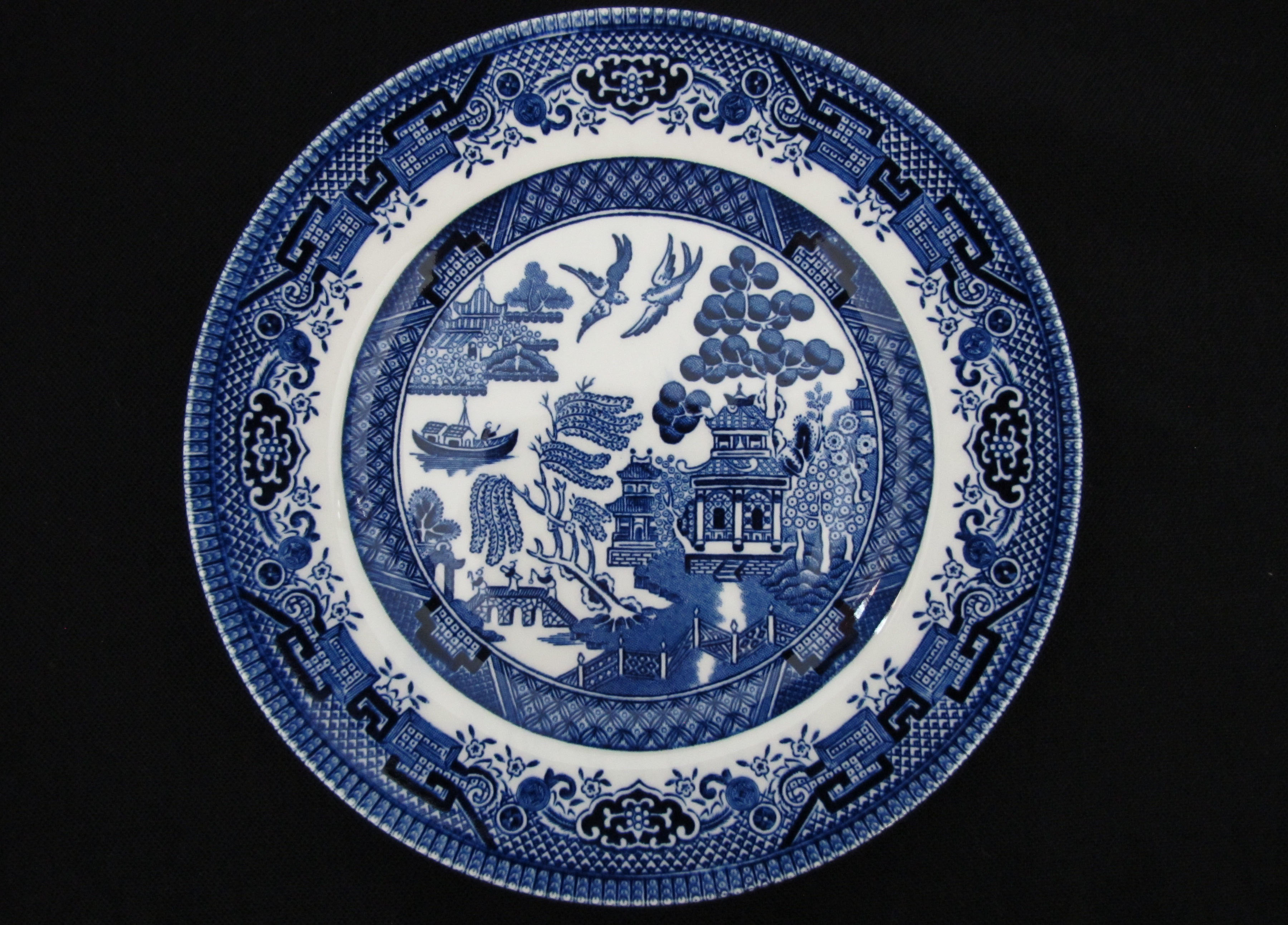Commonly found on historical sites in Australia, Willow pattern ceramics have stood the test of time and been produced for the last 230 years. Here are two online Willow pattern jigsaws for you to do [i].

Photo 1: Virtual Jigsaw 1 https://jigex.com/FY1S

Photo 2: Virtual Jigsaw 2 https://jigex.com/uYe1
The arts of Asia, and especially China, were extremely influential on art and design in Europe. Chinoiserie styles reached the peak of their popularity in Britain in the 18th century and whether on Chinese porcelain or Staffordshire earthenware are found on Australian historical sites, especially in contexts from the first half of the 19th century.
The late 18th century saw a dramatic increase in the duty charged for Chinese ceramics imported on East India Company ships, shipping disruptions with Napoleonic Wars and America trading directly with China. At the same time, the tax on tea was reduced dramatically in 1784 and a duty imposed on silver plate so by the beginning of the 19th century the popularity of drinking tea grew rapidly in Britain. [ii] Blue and white ceramics and tea were no longer the preserve of the wealthy.
Aspects of Chinese patterns and landscapes first found on imported Chinese porcelain were, by the end of the 18th century, decorating earthenware tableware. Willow pattern was among the first standardised and by the early 19th century a story was ascribed to the pattern. It was believed to be a Chinese story – but it was not. It started to circulate after 1810, but the earliest publication is in The Family Friend in 1849. Published as The Story of the Common Willow-Pattern Plate, this title suggests that Willow pattern had become commonplace. [iii] In 1851, the story was even turned into a play, The Mandarin’s Daughter. [iv]
Essentially the story goes that a Mandarin had a beautiful daughter, Koong-Se, who fell in love with the Mandarin’s secretary, Chang. He was banished as he was considered unworthy of a Mandarin’s daughter and her father arranged for her to marry a nobleman. At the celebrations of her betrothal, Koong-Se and Chang met and eloped. Her father caught sight of them and gave chase but they escaped and hid in the house of a maid who the Mandarin had dismissed for conspiring to help the lovers. When their whereabouts became known, they escaped in a boat to a distant island. Chang, however, became famous for his writings and the Mandarin sent guards who killed him. Koong-Se set fire to their house while she was inside so both perished. Touched by their love, the gods immortalised them as two doves eternally flying in the sky together [v].
[i] Thanks to the help from Nick Pitt with the jigsaws.
[ii] R. Copeland, 1990, Spode’s Willow Pattern and other designs after the Chinese, Cassell, London
[iii] Spode and Willow Pattern https://spodehistory.blogspot.com/2013/06/spode-and-willow.html
[iv] P. O’Hara, 1993, The Willow pattern that we knew: The Victorian Literature of Blue Willow, Victorian Studies, Vol 36 No. 4, Indiana University Press, 421 – 442, 427 www.jstor.org/stable/3828644

